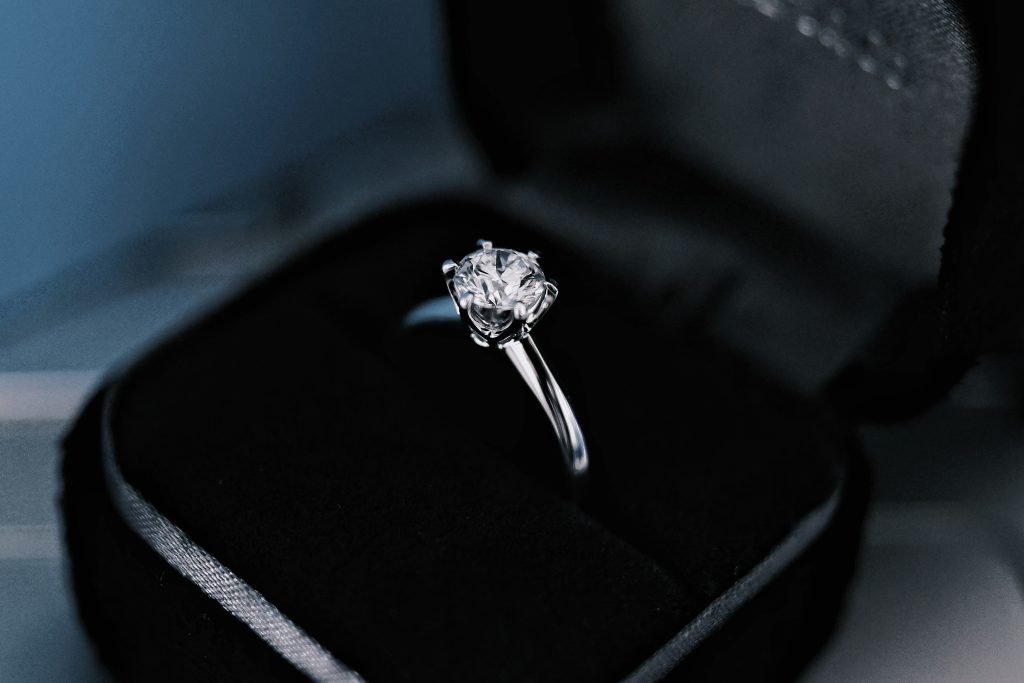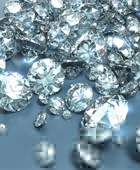Diamonds have long been symbols of luxury, power, and romance. However, the modern diamond market is no longer driven solely by the size, cut, and clarity of the stone. Increasingly, the origin of diamonds has become a significant factor in determining their value and appeal, influencing both their market worth and their ethical standing. The source of a diamond can greatly impact its desirability, with various factors—ranging from geological rarity to ethical mining practices—playing a role in consumer demand. This article delves into how diamond origin influences both their financial value and ethical allure.

Geological Origin and Market Value
The geological origin of a diamond refers to the natural conditions under which it was formed and the location from which it was mined. Diamonds are formed under intense heat and pressure, deep within the Earth’s mantle, over billions of years. Certain regions of the world, such as Africa, Russia, Canada, and Australia, are known for their diamond-rich deposits. The geographical and geological origins of diamonds can significantly influence their market value due to rarity, quality, and historical significance.
- African Diamonds
Africa has historically been the most significant source of the world’s diamonds, with countries like Botswana, South Africa, and Namibia producing some of the most prized stones. African diamonds are renowned for their size, quality, and brilliance. Some mines in these regions produce large, high-quality diamonds, including rare types such as the blue diamonds from the Cullinan mine in South Africa. Due to their size, color, and clarity, these diamonds often fetch a premium in the market. - Canadian Diamonds
In contrast, diamonds from Canada’s Arctic region have gained market value for reasons beyond their quality. Canadian diamonds are often perceived as ethically mined, coming from environmentally conscious and socially responsible operations. Furthermore, they are known for their exceptional clarity and brightness, contributing to their high market value. Canadian diamonds are often laser-etched with a unique identification number, which adds to their traceability and perceived integrity. - Russian Diamonds
Russia is one of the largest producers of diamonds globally, particularly from the Yakutia region, known for its vast deposits. Russian diamonds are highly valued for their consistency in quality, with many stones offering excellent clarity and cut potential. Russian mines have a reputation for producing gem-quality diamonds in large quantities, contributing to their strong market presence. - Australian Diamonds
Australia is best known for its production of fancy colored diamonds, particularly pink and red diamonds from the Argyle mine. These diamonds are exceedingly rare, and their scarcity drives their market value to astronomical levels. Argyle pink diamonds, for instance, are sought after by collectors and investors alike, as their limited supply ensures continual appreciation in value. The mine’s closure in 2020 further intensified the demand for Australian pink diamonds, making them even more valuable.
Conflict Diamonds and Ethical Considerations
The ethical appeal of diamonds is closely tied to their origin. One of the most critical issues affecting diamond value today is whether the stone is a “conflict diamond” or “blood diamond.” These terms refer to diamonds that are mined in war zones and sold to finance armed conflict against governments. Conflict diamonds have fueled civil wars and human rights abuses, particularly in African countries like Sierra Leone, Angola, and the Democratic Republic of Congo, during the late 20th century.
- The Kimberley Process
In response to the international outcry over blood diamonds, the Kimberley Process Certification Scheme (KPCS) was established in 2003. This system aims to prevent conflict diamonds from entering the mainstream diamond market by ensuring that diamonds are certified as conflict-free before they are traded. While the Kimberley Process has had some success in reducing the flow of conflict diamonds, it has faced criticism for its limited scope and the challenges of enforcement. There are concerns that some conflict diamonds may still slip through the cracks due to corruption or loopholes in the system. - Ethical Diamonds
In contrast to conflict diamonds, ethical diamonds are sourced from mines that adhere to stringent labor and environmental standards. These diamonds are often marketed as “conflict-free” or “responsibly sourced,” appealing to consumers who are concerned about the social and environmental impact of their purchases. Canadian diamonds, as mentioned earlier, are a prime example of this, as they are mined under rigorous environmental and labor regulations. Furthermore, certain companies have begun offering diamonds sourced from artisanal mines in developing countries, where fair wages and safe working conditions are guaranteed. - Lab-Grown Diamonds
Lab-grown diamonds have emerged as an ethical alternative to mined diamonds. These diamonds are created in controlled environments using advanced technology, making them chemically, physically, and optically identical to natural diamonds. Because lab-grown diamonds do not require mining, they are free from the ethical concerns associated with conflict diamonds and environmental degradation. Additionally, lab-grown diamonds tend to be more affordable than their mined counterparts, appealing to consumers who are both budget-conscious and ethically minded.
Environmental Impact and Sustainability
Beyond the ethical concerns related to labor practices and conflict zones, the environmental footprint of diamond mining has become another factor influencing consumer choices. Diamonds extracted from certain regions or using specific methods are often judged based on their environmental impact, which can, in turn, affect their value and appeal.
- Traditional Mining vs. Sustainable Practices
Traditional diamond mining often involves large-scale excavation, which can lead to habitat destruction, soil erosion, and water pollution. For instance, open-pit mining, used in many African and Russian operations, can devastate large areas of land and leave lasting environmental scars. The use of hazardous chemicals in processing diamonds can also result in water contamination, affecting local ecosystems and communities.In contrast, diamonds marketed as environmentally friendly come from mines that employ sustainable practices. Some mines, especially in countries like Canada, adhere to rigorous environmental standards. These operations use less invasive techniques, minimize carbon emissions, and rehabilitate mining sites after extraction to restore ecosystems. This commitment to sustainability can add to a diamond’s appeal, particularly among environmentally conscious buyers, who are willing to pay a premium for ethically sourced stones. - Artisanal and Small-Scale Mining
In some regions, particularly in parts of Africa and South America, diamonds are mined by artisanal and small-scale miners. These operations, though typically less technologically advanced, have a smaller environmental footprint compared to industrial mining. However, the environmental impact can still be significant if proper measures are not taken to prevent deforestation or river pollution.To address these concerns, initiatives such as “Fairmined” certification have been introduced. Fairmined diamonds come from small-scale mines that follow responsible environmental practices, ensuring that miners are properly compensated while minimizing ecological damage. This certification process, much like the Kimberley Process for conflict diamonds, helps reassure consumers that their purchase supports sustainable development efforts in mining communities.
Cultural and Historical Significance
The origin of diamonds is not just a matter of geography but also of history and culture. Diamonds from certain mines or regions carry with them a narrative that can enhance their allure. Historical significance or association with famous figures or events can add a cultural layer to the diamond’s intrinsic and ethical value.
- Historical Diamonds
Some of the world’s most famous diamonds, such as the Hope Diamond and the Cullinan Diamond, are prized not only for their physical properties but also for their rich histories. These diamonds, often passed through the hands of royalty or featured in important cultural artifacts, carry a prestige that elevates their market value far beyond what their size or clarity might suggest. A diamond with a story behind it—a provenance linked to a famous person or event—can command prices significantly higher than a comparable stone without such a background. - Cultural Attachments and Regional Diamonds
Certain cultures place a premium on diamonds from specific regions due to historical ties or cultural beliefs. For instance, Indian diamonds, once a primary source of diamonds in ancient times, hold cultural significance in the region. Even though India is no longer a major producer, diamonds associated with this origin carry a cultural prestige. Similarly, diamonds from Russia or Africa may carry connotations of the historical legacy of the mining industry in those areas, influencing consumer perceptions and market value. - Designer and Branded Diamonds
In recent years, diamond brands have increasingly emphasized the importance of origin through storytelling and marketing. High-end jewelry houses often market diamonds from particular regions or mines, touting their origins as a hallmark of quality and exclusivity. For example, Tiffany & Co. emphasizes the traceability of their diamonds, highlighting their commitment to sourcing from conflict-free regions and ensuring transparency about the stone’s journey from mine to market. The branding of a diamond, when linked to its origin, can significantly enhance its perceived value, creating an emotional appeal for consumers.
Lab-Grown Diamonds: Disrupting the Market
As the conversation around diamond origins has expanded, the rise of lab-grown diamonds has introduced a disruptive force into the traditional diamond market. These synthetic diamonds, produced in controlled environments using methods such as High Pressure-High Temperature (HPHT) or Chemical Vapor Deposition (CVD), mimic the conditions under which natural diamonds are formed. Lab-grown diamonds offer an alternative to mined diamonds, and their appeal lies in both ethical and financial factors.
- Ethical and Environmental Advantages
Lab-grown diamonds, by their very nature, avoid many of the ethical and environmental concerns associated with mined diamonds. As they are created without the need for destructive mining operations, they do not contribute to habitat loss, water pollution, or deforestation. Additionally, because they do not come from conflict zones, they are inherently conflict-free. These attributes make lab-grown diamonds particularly appealing to ethically conscious consumers who are looking for alternatives that align with their values. - Market Disruption and Pricing
The introduction of lab-grown diamonds has also disrupted traditional diamond pricing models. Typically, lab-grown diamonds are 20-40% less expensive than natural diamonds of similar size and quality. This price differential, combined with their ethical and environmental advantages, has made lab-grown diamonds an attractive option for a growing segment of the market. However, some consumers still prioritize the rarity and geological origins of natural diamonds, seeing them as a more prestigious and valuable investment. - Shifting Consumer Preferences
As consumer awareness of ethical and environmental issues grows, lab-grown diamonds are gaining market share. Many younger buyers, particularly Millennials and Gen Z consumers, place a premium on transparency and sustainability, and lab-grown diamonds fit these preferences. However, the allure of natural diamonds remains strong among those who view them as a symbol of rarity and timelessness, factors that lab-grown diamonds cannot replicate.
Conclusion
The origin of a diamond plays a pivotal role in determining its market value and ethical appeal. From the geological formation deep within the Earth’s mantle to the mine it is extracted from, a diamond’s provenance can influence its price, cultural significance, and ethical standing. Consumers today are more discerning than ever, with many prioritizing diamonds that are responsibly sourced and environmentally sustainable. As lab-grown diamonds continue to grow in popularity, the traditional diamond industry faces new challenges and opportunities.
Ultimately, whether consumers choose a natural diamond mined from the earth or a lab-grown alternative, the origin of the stone will continue to shape its story, its value, and its place in the market. The modern diamond buyer is no longer satisfied with just the stone’s aesthetic qualities; they want to know where it comes from and what impact their purchase has on the world. Understanding the impact of diamond origin allows both buyers and sellers to make informed decisions that reflect their values, ethics, and financial goals.




